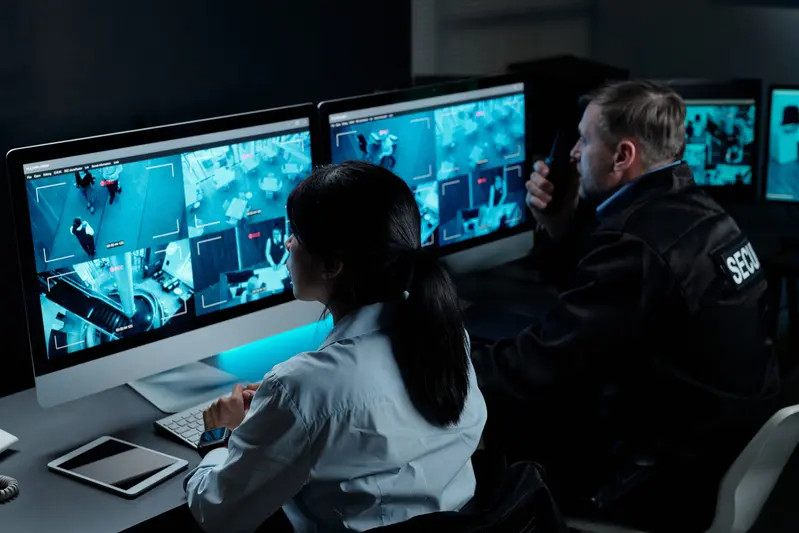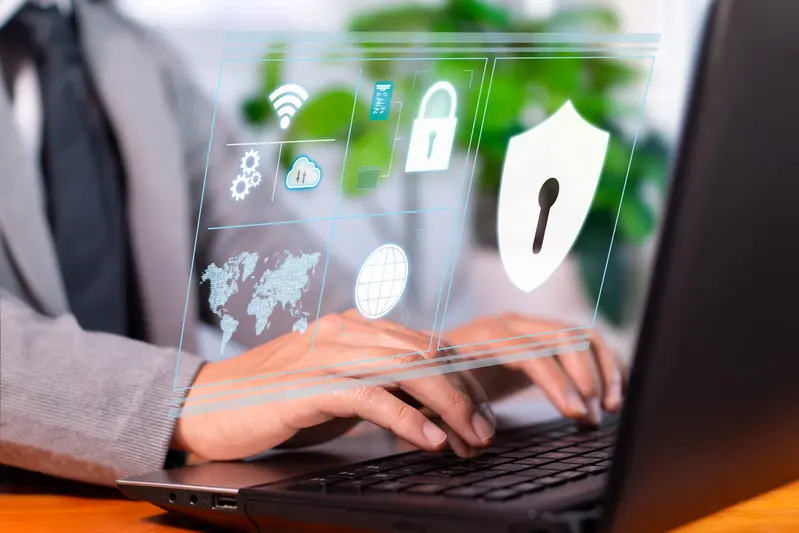Modern Executive Protection: Cutting-Edge Digital Security Services and Strategies
Imagine a CEO of an AI startup landing in a country frequently listed in the U.S. State Department travel advisories. Within minutes, her security team receives a message. Backup units are en route as local protests have shifted two blocks east. Real-time GPS, predictive threat analysis, and live drone feeds have turned a high-risk arrival into just another Tuesday.
In addition to protecting her from danger, the security team acting fast on intel has saved the startup the headache of hiring PR firms to control the narrative and convince early investors of the company’s future.
With threats becoming more complex and risk landscapes shifting, technology in executive protection is no longer an option but a necessity.

Years ago, executive protection was often synonymous with bodyguards and blacked-out SUVs. That has changed; it is now full tech. Modern executive protection professionals and security companies leverage artificial intelligence-powered surveillance, encrypted communications, and biometric access to better manage risks and prevent potential damage. Combined with traditional security methods, such as bulletproof cars and vetting drivers and staff, executives traveling overseas can be assured of their safety.
Evolving Threat Landscape and the Need for Electronic Security Solutions for Enhanced Safety
The digital revolution means that business leaders are more vulnerable to new forms of intrusion, requiring a tech-savvy approach to protection.
Here’s how things have changed in the past two decades:
1. Threats Have Gone Digital
In the 1980s, 1990s, and early 2000s, prominent individuals and executives only worried about paparazzi, stalkers, and occasional corporate rivals. That “simple era” is gone. Today’s executives deal with doxxing, extortion, social engineering, and remote surveillance. Sometimes, they have to deal with these issues all at once.
A 2024 report by IBM states that the average cost of a data breach is $4.45 million, up from $4.35 million in 2023. The figures are expected to increase as corporate espionage rises and cyberattacks become more complex each day.
Recently, the COO of a tech company had their phone compromised during an international trip. Hackers created a fake airport Wi-Fi network, which they used to access his phone and steal sensitive company data. They demanded a ransom in crypto, or they would release his private data and sell financial documents to his rivals.
The company’s security team, along with dedicated personnel and a digital forensics team, launched a comprehensive response. They shut down compromised devices, removed access to internal systems and applications, and secured critical infrastructure. Digital forensics was also deployed to trace the breach before moving the executive to a safe location.
There is also a new threat: deepfake technology and AI. While no major scandals involving impersonations have surfaced yet, researchers warn that organizations should invest in AI-driven threat intelligence to stay ahead of emerging risks.
2. Complexity of Global Operations
CEOs and leadership teams are now crossing borders more frequently than ever before. While these frequent travels have yielded results for most companies, the success comes with its fair share of challenges.
One of the challenges in executive protection is safeguarding VIPs across diverse regions. Strategies a VIP team might use in a city like London may not be applicable in an East Asian city, especially given varying geopolitical factors.
This necessitates continuous threat assessment and data protection, ensuring that actions taken are tailored and timely. The need to monitor local protests, political unrest, and crime patterns in real-time has transformed former reactive travel security into an innovative, proactive approach. Leveraging innovation in technology and intelligence allows for dynamic protection plans that adapt to evolving risks worldwide.
Security Tech Trends Powering Modern Executive Protection Strategies
From AI-powered surveillance systems to GPS trackers that feed real-time data to security operations centers, technology acts as the eyes and ears of modern executive protection. While tech does not replace skilled security teams, it enhances their reliability, making them faster, sharper, and more proactive. Effective mitigation of threats relies on integrating these tools into a comprehensive protection strategy supported by advanced security services. Remember, the best defense in modern executive protection is data, not muscle.
Surveillance & Monitoring Systems
Smart surveillance systems now use AI-driven cameras equipped with advanced features. With facial recognition, security systems now support real-time monitoring, flagging everything from unrecognized loiterers to abandoned bags.
In addition to providing security professionals with instant alerts, surveillance technology now uses behavioral analytics. By detecting suspicious activity in chaotic environments such as crowded galas, teams protecting VIPs can act quickly and save executives’ lives. This technology is a vital component of modern executive protection strategies, enabling leadership to make informed decisions and maintain safety in dynamic situations.
GPS Tracking for VIPs
Security teams also use geo-fencing technology in high-risk travel and politically unstable regions. While most security teams now have more talented drivers, kidnappings are still common. Luckily, advancements in GPS and secure network systems allow protection professionals to receive early alerts and act before situations escalate.
For example, if a CEO is traveling and their vehicles deviate from the planned route, security teams are alerted promptly. This technology also helps in high-profile public appearances, as geo-fencing can notify teams of any unauthorized movements outside secured perimeters. Coupled with robust cybersecurity measures, these tools provide a comprehensive layer of protection in both physical and digital realms.
Communications & Encryption
Executives and VIPs attending events or traveling abroad no longer rely on standard networks, as they can be unreliable or vulnerable to compromise. Instead, security teams opt for more secure alternatives such as encrypted messaging apps, satellite phones, and secure voice channels.
In 2022, an executive visiting a foreign country found himself in a nightmare. The host government shut down the internet and hacked cell networks. There were reports of armed factions tracking high-value targets.
The executive’s only advantage was that his security team had military-grade encrypted communication suites with encrypted messaging and satellite phones. He was later evacuated and safely taken home.
Data Analytics & Threat Intelligence
As AI becomes more accessible, security teams are utilizing it to scour social media and the dark web for potential threats. Compared to years back when a team had to manually scan through different platforms, there are now AI-enabled tools for that. Security professionals can now also aggregate data from news sources, law enforcement public feeds, and forums to flag risks before they materialize.

Proactive Threat Intelligence & Early Risk Detection
Proactive intelligence is about staying one step ahead—catching ominous chatter before it spirals into a tangible threat. VIP security teams cannot afford to play defense, as it is dangerous and expensive.
How Threat Intelligence Tools Work
Intelligence tools are the equivalent of a 24/7 security detail. Different tools scan different platforms and specific threats. Some include:
Open-source intelligence (OSINT): With OSINT, security teams can safely and quickly scan dark web forums and news sites for the latest happenings. Teams also check public records to monitor doxxing, personal data exposure, and early warnings for physical threats.
Social media: Monitoring social media for keyword triggers, escalating rhetoric, and suspicious behavior is becoming an increasingly important part of early risk detection.
Private channels: Security teams can take a step further by analyzing underground marketplaces where threats often surface first. When something sketchy pops up, they can respond faster. This means less sifting through the noise, only acting on actionable intel.
In 2023, a global CEO’s itinerary was leaked online. Threat intelligence tools successfully flagged it, and this early detection allowed their team to reroute and dodge potential breaches. While the company had issued a press release about the tour, leaks detailing precise details, timestamps, and even their hotel were a security risk.
How did they respond? The elite security team adjusted its routes, bolstered on-the-ground security, and partnered with local authorities. With the adjustments, the CEO’s trip was not only safe but was well covered by all major publications. This instance shows that early detection is not a luxury but a necessity.
Does this mean human analysts are no longer needed? While AI does the heavy lifting in detecting danger and data leaks, experts remain crucial in ensuring the safety of VIPs. They interpret data accurately, validate risks, maintain secure communication, and make informed judgment calls that technology alone cannot.
Cybersecurity Integration: Monitoring, Tracking, and Protecting Sensitive Data
In modern executive protection, a data leak is as dangerous as a physical breach—the two realms are now intertwined. Protecting sensitive intel has evolved from just firewalls and encryption to mitigating risks that could otherwise affect stock prices, derail major deals, and put lives at risk.
Why Cybersecurity Is Non-Negotiable
Modern executives are prime targets for hackers due to their status and wealth. A successful hack may mean access to confidential M&A details, personal emails, and family data, which the bad guys can use to blackmail, steal identities, or carry out insider trading.
Additionally, doxxing a CEO’s home address or a private jet itinerary not only invites physical threats but can also cause embarrassment.
Key Cybersecurity Measures
Here are some of the ways companies and CEOs can protect sensitive data:
1. Secure Networks & Devices
The first way a company can stay steps ahead of hackers is by ditching the “trust but verify” mantra and, instead, having a zero-trust architecture. They should require authentication for every access request, from a CEO’s smartphone to a corporate laptop.
Additionally, they should pair electronics with VPNs and endpoint encryption.
2. Regular Penetration Testing
Companies should also hire ethical hackers to conduct regular penetration testing, exposing vulnerabilities before criminals do. This stress testing should be extended to executives’ personal devices and home networks.
3. Social Engineering Awareness
In addition to checking their devices and networks, companies should train executives on social engineering and how to spot phishing emails, social media traps, and suspicious calls.
When Cybercrime Gets Personal and Costly:
In 2023, an American multinational hospitality company was in the news for losing over $100 million due to a single phishing message. A notorious ransomware gang successfully gained access to executive credentials after socially engineering an IT employee on LinkedIn.
In addition to the company suffering after its system shutdown, the hackers exposed sensitive data, including the CEO’s correspondence. The company had to deploy a physical security team to protect the CEO and other executives.
Real-World Examples of Technology in Executive Protection: Averting Crises and Enhancing Executive Safety
Technology has been used to save the lives of executives and prominent individuals from emerging threats of physical harm. Here are three recent examples and the technology used in each case:
Case Study 1: Drone Surveillance at a Major Sporting Event
In 2022, at a global sporting event, security teams protecting VIPs and world leaders averted a potential threat. In addition to targeting the executives in attendance, the attack could have led to thousands of people dying.
Tech Used: Security teams used AI-powered surveillance drones with facial recognition. They detected an unauthorized vehicle speeding towards a restricted zone where VIPs were located.
Results? Thanks to early detection, security teams successfully intercepted it. They found weapons and a manifesto, but there was no public scare or disruption.
Case Study 2: AI Thwarts a Mass Shooting Threat Before a Film Festival
A few days before a popular film festival in 2023, an AI threat detection platform flagged a Reddit post from a user planning a mass shooting. The post included gun photos and location scouting.
Tech Used: The post was detected by AI-driven threat intelligence tools, which scan thousands of social media posts every hour. They search for violent keywords, behavior patterns, and imagery.
Outcome? The VIP security team alerted the local PD within minutes. Police successfully identified the suspect, a 19-year-old with an AR-15. The suspect was later charged with felony terroristic threats.
Case Study 3: Hacked Itinerary
In 2019, a Fortune 500 energy executive’s email was hacked. The hackers accessed and leaked the executive’s travel plans, including hotel, motorcade routes, and a private dinner location.
Tech Used: The CEO’s VIP security team detected anomalous logins from Belarus just a few minutes after the breach. They used AI-powered anomaly detection and automatically locked the compromised account.
Results? The itinerary was rerouted during the flight, and their EP team deployed decoy vehicles to their original locations. The host nation’s police also arrested three armed suspects at the original hotel.
Best Practices for Integrating Tech into Executive Protection
Technology isn’t a silver bullet—effective integration requires planning, training, and alignment of all security assets under a single, cohesive strategy.
While executive protection is getting major upgrades, these investments only equal better security when combined with the following practices.

Integrated Security Approach
Smart protection begins when an executive protection team starts treating physical and cybersecurity as two sides of the same coin. Tech should also align with a company’s policy, ethical standards, and legal framework.
Training & Collaboration
While most new technology is user-friendly, training is still important. Additionally, security teams require ongoing training to stay current with emerging threat tactics, protocols, and new technologies.
Executive Protection (EP) teams do not operate in a vacuum. So, there should be a cross-functional collaboration with other departments such as HR, Legal, and IT to ensure security measures are strong, lawful, smart, and, more importantly, aligned with broader business goals.
Vendor & Tech Partnerships
Good technology is only as good as the people behind it. For easier integration, companies and security teams should work with teams that are familiar with the intricacies of VIP protection and its rapid pace. They should also be aware of non-negotiables, such as discretion and uptime, as well as the need for customization, support, and domain knowledge.
Scalability & Cost-Benefit Analysis
Here’s the reality: not every company needs full-spectrum coverage. While a CEO of a mid-sized company may require protection, it won’t necessarily match that of a Fortune 500 executive. The goal should be to find solutions to their real risks while keeping ROI as the main priority.
Common Pitfalls & Challenges
Hackers and criminals targeting VIPs and business executives don’t win because they’re tech geniuses; they win because of these common slip-ups:
Over-Reliance on Tech
While technology has come a long way and is an important tool in VIP security and protecting a company’s trade secrets, it is not a substitute for human intelligence. Even the most advanced AI-powered security tools can generate false positives, exposing a company to potential threats.
Complacency
Complacency is not just laziness; it is a backdoor invite. A firewall that has not been upgraded for years or an unpatched VPN are some of the vulnerabilities hackers may use. By delaying patching known vulnerabilities, companies unintentionally jeopardize other efforts they’ve implemented, including expensive security systems.
Data Privacy & Compliance
Most firms offering VIP security often fail to strike a balance between surveillance and executive privacy during trips. This issue can fortunately be solved by encrypting and anonymizing data where possible.
Compliance is also key. Knowledge of regional laws, especially in strict regions such as countries in the European Union, helps avoid issues and sometimes fines.
Insufficient Training
Even the most sophisticated system, regardless of how advanced its cybersecurity integration is, is only as strong as the team operating it.
Recent studies indicate that the majority of breaches originate from human error. For example, a facial recognition system can only help a company beef up security if guards know how to reset it after a false alarm.
In addition to training staff on technicalities, staff should be trained on identifying phishing links and handling suspicious calls. These training sessions can be in the form of regular drills and bite-sized, recurring sessions.
Summary
As technology evolves, executive protection teams must stay ahead by investing in the latest tools and innovations. AI-powered surveillance scans, GPS trackers, and data analytics in security can enhance their existing frameworks. They also complement already-existing resources, such as trained professionals, to deliver proactive protection.
Additionally, EP teams must train their staff to use technology and identify phishing schemes, ransomware, and boardroom-level data breaches. This integrated approach gives them an edge over criminals and hackers.
Are you looking to enhance executive protection but unsure where to start? Transitioning to technology-driven security can be challenging, and the right partner makes all the difference. We offer advanced, customized executive protection services designed to identify threats early and keep executives safe. If you already have security measures in place but want to optimize their effectiveness, our tech-driven security audits can provide valuable insights.
Contact us today to strengthen your protection strategy and ensure your executives are secure!




